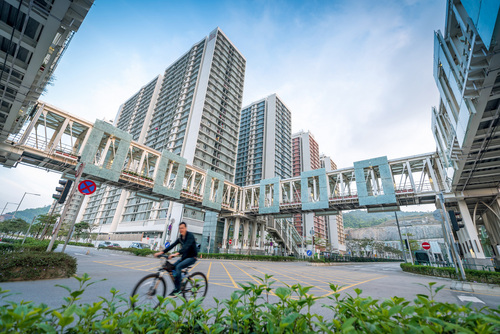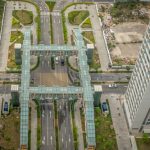 “Sac Pai Van Public Housing”
“Sac Pai Van Public Housing”
To boost public understanding of Sac Pai Van public housing area which was completed and occupied in recent years, the Government Information Bureau (GCS) has produced a video clip and an album of still photographs of the new community, offering viewers snapshots of this new corner of the city. The Sac Pai Van public housing cluster includes On Son Building, Koi Nga Building and Ip Heng Building under the Home-Ownership Scheme, and public rental housing in the Lok Kuan Building, with a total of 9,015 residential units. The first Chinese characters of these four buildings can be combined as “On-Koi-Lok-Ip”, which means “Homes for all in a contented society”. Developed wholly with government funds, Sac Pai Van public housing area is currently the largest public housing project in Macao. It is the first community in Macao to utilise natural gas as domestic fuel and recycled water for toilet flushing. Various public departments are closely monitoring the provision of community facilities related to transportation, livelihoods, medical and healthcare, education, grocery markets, sports and recreation, and social services, ensuring local residents’ basic needs are met. The video and the album of photographs are the work of GCS photographer Luo Kam Lit. The video clip “The New Face of Urbanised Sac Pai Van”, produced with time-lapse techniques combining ground shots and aerial views offering different perspectives, has been uploaded to GCS’s Youtube channel (www.youtube.com/user/macaogcs). The album of photos “Sac Pai Van Public Housing”, has been uploaded to the photo albums column of GCS’s MSAR News app. The album features 10 photos, showing the outside and inside of the public housing cluster in broad daylight and at night.
View gallery


